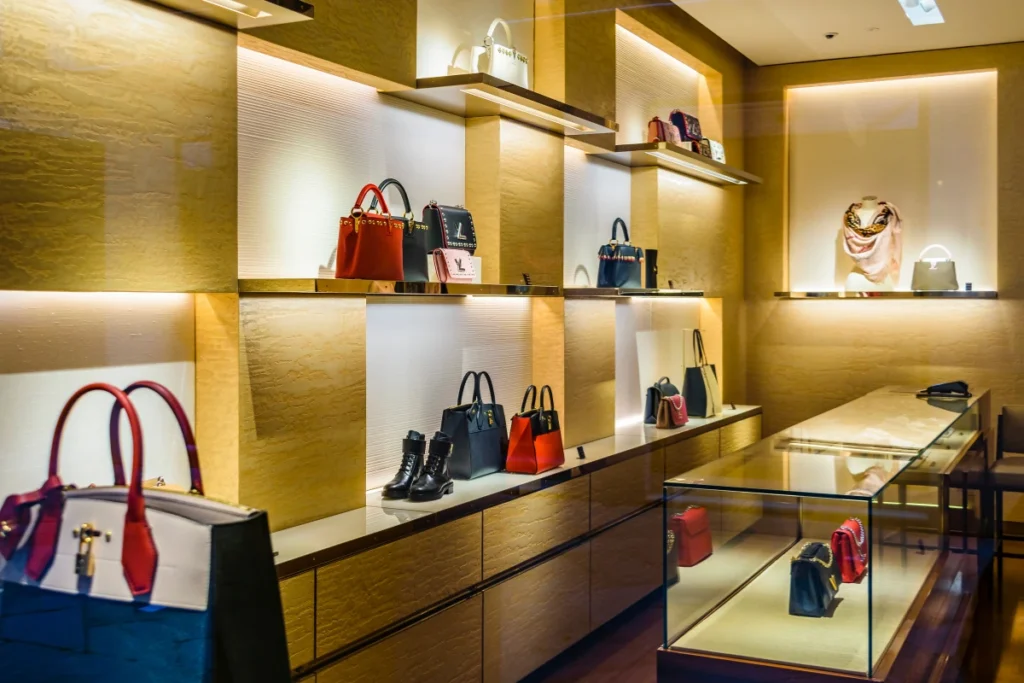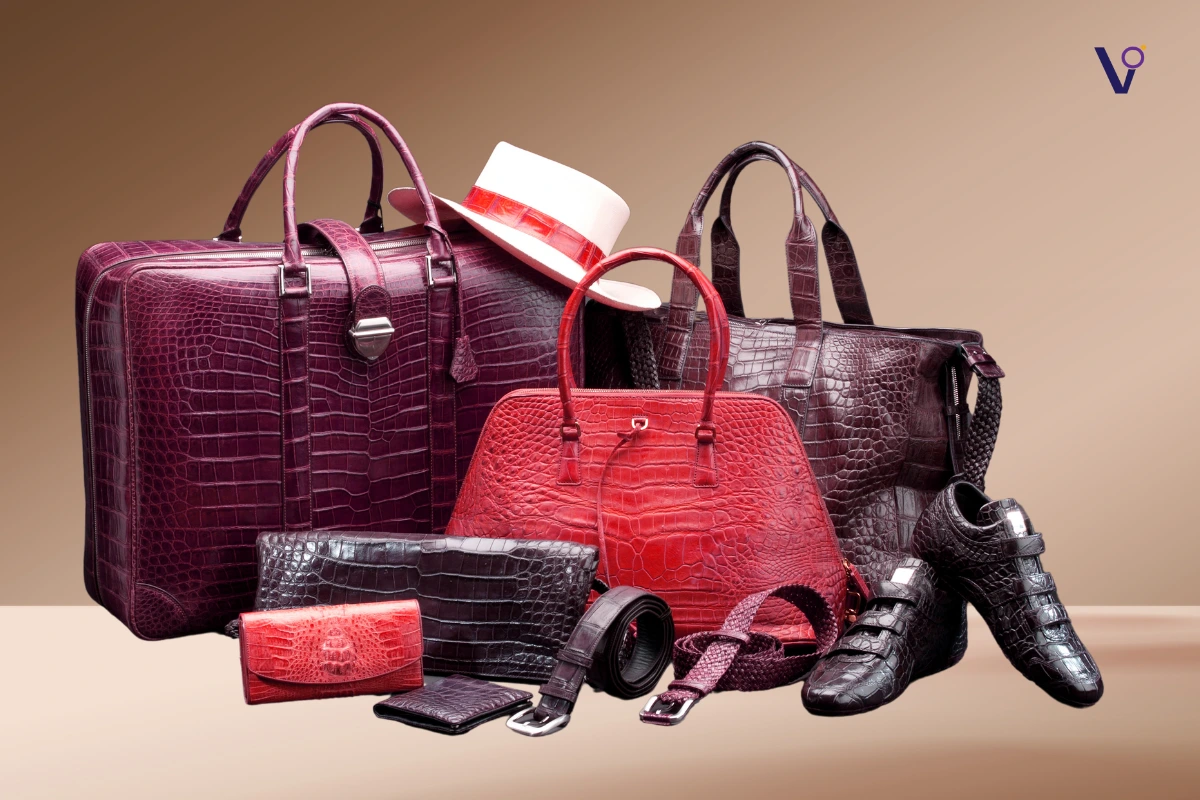Louis Vuitton, the globe’s most valuable luxury brand, makes more than $15 billion in yearly sales and leads the luxury fashion industry with the highest profits. Although these brands are usually linked with affluence, their target market is not the affluent but the aspirational consumer. Luxury brand marketing relies on neuroscience and tactical strategies to establish an image of exclusivity intended to affect buying behavior.
To see how these brands work, a closer examination of their sales strategies shows that they have thoughtfully designed tactics to manage consumer perception and choice. Keep reading!
Louis Vuitton: The Scarcity Effect

Luxury brands intentionally produce exclusivity by restricting supply, even when they can afford to satisfy demand. This induces a feeling of urgency and desirability.
At Louis Vuitton, shoppers are regularly faced with waitlists and shortages. A popular item might be on display in the store, but salespeople will often say it is out of stock because of “crazy demand.” However, after asking questions or going to another store, the item will magically reappear—usually touted as the “last one in stock.” This tactic, used extensively throughout industries, including tech firms such as Apple, serves to further the perception that scarcity equals value, inducing impulse buying.
Dior: The Price Illusion

The second-largest luxury fashion company, Dior, produces more than $11 billion a year. Its most coveted tote bag, which retails for $3,500, has a production cost of about $57.
The value lies not in the cost of production but in the perception of value. The application of superior materials is sometimes emphasized as the main rationale, but after that comes the issue of branding. For instance, a bag composed of Egyptian cotton—often found in more utilitarian pieces of merchandise—is touted as a special, high-grade product.
This approach aligns with a well-known business strategy: positioning a brand as premium by pricing products significantly higher. Pricing, rather than quality, becomes the differentiating factor. The surrounding environment—store ambiance, lighting, and strategic product placement—further reinforces the perception of luxury, encouraging customers to associate higher prices with exclusivity.
Gucci: The Social Status Game
Gucci is one of the most recognizable luxury brands and is famous for its statement pieces and bold designs. From tracksuits to belts, each product is designed to convey status.
In-store, exclusivity is supported. Customers may be greeted by a managed entrance process, with limited access producing the perception of high demand. Inside, luxury treatment—ranging from personal shopping to complimentary refreshments—is included in the experience. Even brief wait times are used tactically to encourage browsing and enhance the chance of a purchase.

A $5,000 Gucci tracksuit is not bought for what it is made of but for what it symbolizes in terms of wealth and celebrity culture. The company does not sell apparel; it sells status, which further reinforces the notion that dressing in Gucci is a declaration of achievement.
Balenciaga: The Art of Trolling
Balenciaga is known for taking fashion to extreme lengths with unusual designs, like a $1,800 leather chip bag or a $4,000 tape bracelet. Such apparently absurd items are not arbitrary; they are crafted specifically to stir controversy and utilize neuromarketing principles.
Luxury brands invest millions in research, using fMRI scans and eye-tracking technology to analyze consumer responses to advertising and product design. The goal is not to emphasize features or craftsmanship but to trigger an emotional response. Studies show that purchasing decisions are heavily influenced by emotions rather than logic, making branding and storytelling more impactful than the product itself.
Chanel: The Feminine Identity
Chanel’s brand has rested on its iconic elegance and womanliness. All aspects of the shopping experience serve to enhance and reinforce this reputation, from store design to the presentation of goods.
One luxury brand marketing is artificial purchase limitations. A buyer who wishes to purchase several quintessential Chanel purses will be informed that a strict policy dictates one purse per customer. The exceptions, of course, are made when enough demand seems imminent, which, of course, makes exclusivity even greater.
This is branding replicated from other markets—Volvo’s brand positioning as safety, Nike’s emphasis on perseverance, and Apple’s simplification brand positioning. Chanel’s brand of timeless womanhood creates desirability around its products, and it sells aspirationally for multiple generations.
Rolex: Branding the Waitlist
Prestigious Rolex is worth over $10.1 billion annually. It’s also extremely difficult to purchase one.
Most customers find that official dealers never have Rolex models in stock to buy outright. Rather, they are put on a waiting list with no promise of a delivery timeline. This provides an illusion of scarcity, and the product is perceived to be more valuable merely because it is hard to come by.
Rolex has mastered the art of making people desire what they cannot have. By selling the wait experience, not the product itself, the brand guarantees continued demand and perceived luxury.
The Psychology of Luxury Branding
Luxury brands do not sell goods; they sell status, emotion, and rarity. Their success is founded on psychological principles that govern consumer behavior:
- Scarcity heightens perceived value and a sense of urgency.
- Price priming affects the way customers perceive value.
- Social standing is actually the product itself.
- Neuromarketing guarantees branding achieves the appropriate emotional reaction.
- Exclusivity strategies make products desirable by restricting access to them.
These actions are not solely for billion-dollar brands. They can be implemented by any firm to raise perceived value, tighten brand positioning, and propel profitability.
Create exclusivity through limited supply, premium pricing, and high-end branding. Focus on storytelling, quality perception, and emotional appeal to attract aspirational consumers.
Consumers associate high prices with exclusivity, status, and emotional fulfillment. Luxury purchases trigger a sense of accomplishment, desirability, and belonging to an elite group.
They create exclusivity through limited supply, premium pricing, aspirational marketing, controlled distribution, and immersive shopping experiences to reinforce status and desirability.
Limited availability increases desirability, urgency, and perceived value. Consumers feel privileged when they obtain rare items, reinforcing brand loyalty and status signaling.
Consumers associate luxury brands with quality, social status, and exclusivity. Higher prices signal prestige and enhance self-perception, making the purchase emotionally rewarding.



